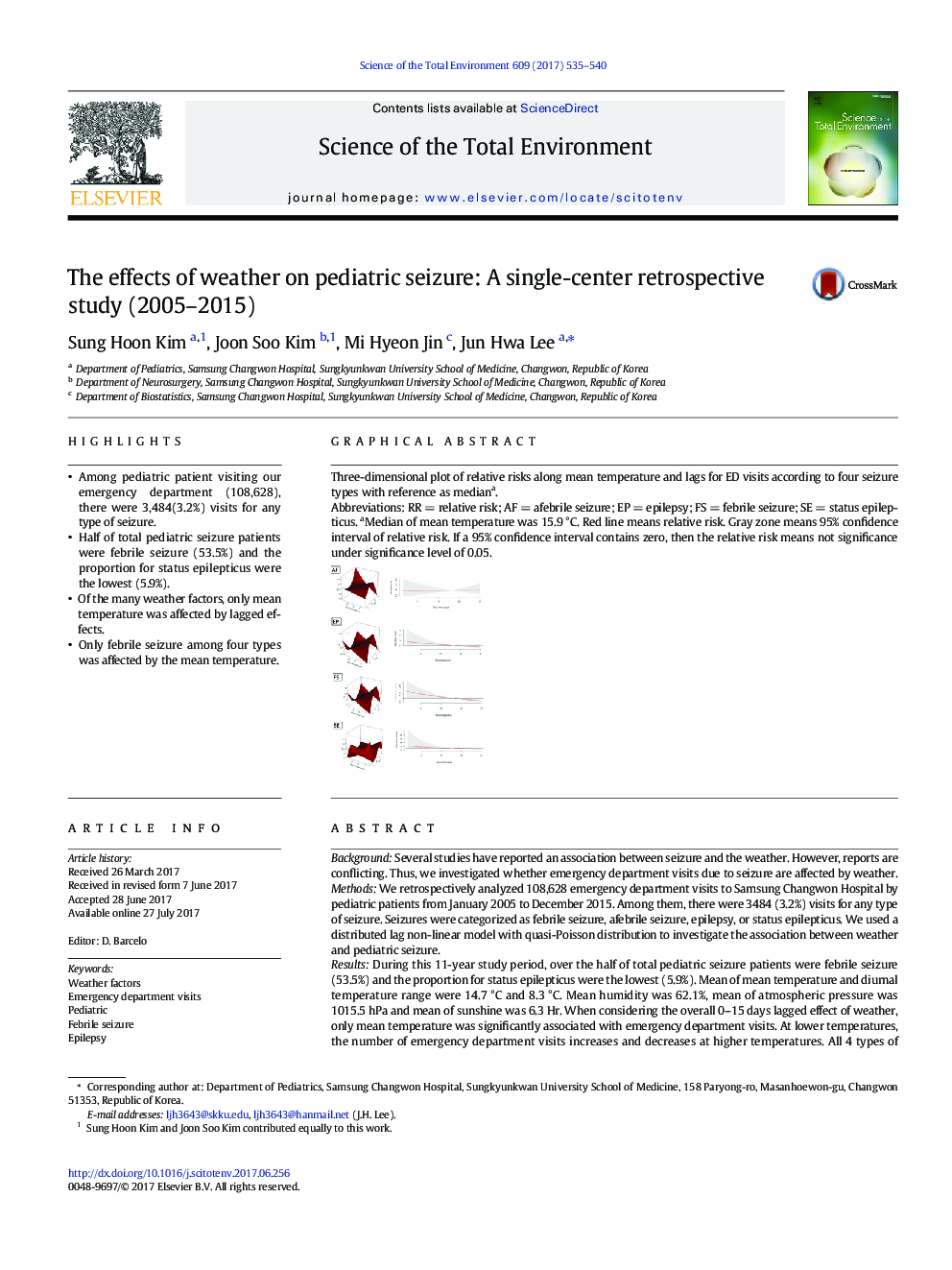| کد مقاله | کد نشریه | سال انتشار | مقاله انگلیسی | نسخه تمام متن |
|---|---|---|---|---|
| 5750780 | 1619693 | 2017 | 6 صفحه PDF | دانلود رایگان |
- Among pediatric patient visiting our emergency department (108,628), there were 3,484(3.2%) visits for any type of seizure.
- Half of total pediatric seizure patients were febrile seizure (53.5%) and the proportion for status epilepticus were the lowest (5.9%).
- Of the many weather factors, only mean temperature was affected by lagged effects.
- Only febrile seizure among four types was affected by the mean temperature.
BackgroundSeveral studies have reported an association between seizure and the weather. However, reports are conflicting. Thus, we investigated whether emergency department visits due to seizure are affected by weather.MethodsWe retrospectively analyzed 108,628 emergency department visits to Samsung Changwon Hospital by pediatric patients from January 2005 to December 2015. Among them, there were 3484 (3.2%) visits for any type of seizure. Seizures were categorized as febrile seizure, afebrile seizure, epilepsy, or status epilepticus. We used a distributed lag non-linear model with quasi-Poisson distribution to investigate the association between weather and pediatric seizure.ResultsDuring this 11-year study period, over the half of total pediatric seizure patients were febrile seizure (53.5%) and the proportion for status epilepticus were the lowest (5.9%). Mean of mean temperature and diurnal temperature range were 14.7 °C and 8.3 °C. Mean humidity was 62.1%, mean of atmospheric pressure was 1015.5 hPa and mean of sunshine was 6.3 Hr. When considering the overall 0-15 days lagged effect of weather, only mean temperature was significantly associated with emergency department visits. At lower temperatures, the number of emergency department visits increases and decreases at higher temperatures. All 4 types of seizure also showed similar patterns. In particular, only visits of febrile seizure were significantly associated with mean temperature.ConclusionWe investigated the association weather and pediatric seizure by considering 0-15 day lags. In particular, low mean temperature increase the emergency department visits for pediatric seizure and high mean temperature decrease the pediatric seizure. In addition, only febrile seizure of 4 seizure types was affected by mean average temperature.
Three-dimensional plot of relative risks along mean temperature and lags for ED visits according to four seizure types with reference as mediana.Abbreviations: RR = relative risk; AF = afebrile seizure; EP = epilepsy; FS = febrile seizure; SE = status epilepticus. aMedian of mean temperature was 15.9 °C. Red line means relative risk. Gray zone means 95% confidence interval of relative risk. If a 95% confidence interval contains zero, then the relative risk means not significance under significance level of 0.05.82
Journal: Science of The Total Environment - Volume 609, 31 December 2017, Pages 535-540
